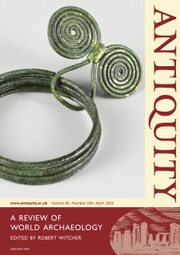No CrossRef data available.
Article contents
Improving our understanding of Londinium
Review products
Published online by Cambridge University Press: 21 November 2016
Extract
Our extensive knowledge of Roman London is the result of over four decadesof large-scale excavation. In the UK, the establishment and growth ofprofessional archaeology since the 1970s, coupled with the funding providedby property developers since 1990 (Fulford & Holbrook 2015), has transformed ourunderstanding of both urban and rural sites—and nowhere more so than London.A combination of intensive building development in the City of London andthe world-leading technical quality of many of the excavations means that Londinium is now probably both the most extensively andbest-excavated major town of the Roman world. Knowledge generated by theseexcavations, however, has not always been made available throughpublications as it should have been. Although there is an important archivein which the records of past projects are curated, how and where to publishresults has been a long-running problem, especially for the excavations ofthe 1970s and 1980s where post-excavation work was often not properly fundedor supported. One major project to publish a synthesis of work on such sitesin Southwark, south of the Thames, did result in a series of importantvolumes (Sidell et al. 2002; Cowan 2003;Hammer 2003; Yule 2005; Cowan et al. 2009), but a programme designedto provide systematic coverage of such projects in the City of London, tothe north of the river (Maloney 1990; Perring & Roskams 1991; Williams 1993;Davis et al. 1994), failed to produce one of the five volumes promised—thatconcerning the archaeology of the key eastern hill. We also lack anyup-to-date synthesis, a problem only partly compensated for by DominicPerring's (1991) popular overviewand Wallace's (2014) in-depthanalysis of the evidence for the period down to the Boudiccan revolt in AD60/61.
Information
- Type
- Review
- Information
- Copyright
- Copyright © Antiquity Publications Ltd, 2016

